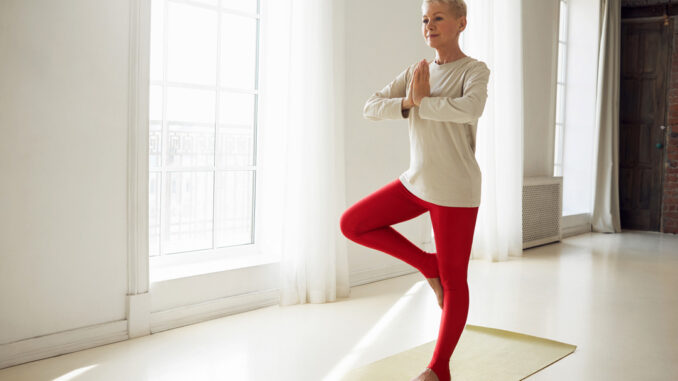
How improving your balance can help extend the length of your life
Balance is an important indicator of longevity in certain ways. At its most basic level, someone who has good balance is less likely to fall, meaning that they are at a lower risk of injury. However, more recent studies have examined other ways in which balance skills can dictate how long someone might live, as this could be a precursor to other ailments.
A study published online in 2022 by the British Journal of Sports Medicine found that people who are unable to stand on one leg for 10 seconds in middle and later life have almost double the usual risk of premature death. These findings came after researchers evaluated the health information and balance test results of 1,700 people (who were aged 51-75 and all of whom were free of walking problems); they then followed up with these subjects for seven years. Certain factors were taken into consideration such as participants’ age, underlying conditions, weight and other factors, and scientists determined that failing the balance test was associated with an 84% higher risk of dying within the study period (when compared with passing the balance test). It should be noted that this study was observational and found only an association, not a cause-and-effect relationship (Harvard Health Publishing).
According to Jefferson Health, we naturally experience a decline in functions – including balance – as we get older, but the real “tipping point” is when physicians see a substantial decrease in balance. This is often a warning sign of a larger underlying problem. By age 65, approximately 15% of people report having trouble with balance, and that number reaches almost half by the age of 85. While balance problems aren’t usually the actual cause of death for older adults, they represent other possible risks to your health.
So, what is balance? Balance is the brain integrating sensory information from the inner ear, vision and the body’s proprioception (awareness of body position). This information is used to constantly adjust muscles and body position to maintain stability. Essentially, balance is a dynamic process involving the constant interplay between sensory input, brain processing and motor control.
In sum, shaky balance is an early warning system for biological aging. It’s the number-one cause of fatal injuries in older persons and, as we age, the instances of falls increases.
A simple balance test for seniors is the single-leg stance test, in which they stand on one foot for 10 seconds. If this is a struggle, consider discussing the matter with a health professional.
The encouraging thing about balance issues is that they can be improved upon. There are a number of exercises that you can do for your overall balance, and these include:
Single-leg stands: Hold onto a chair (if needed) and lift one foot off of the floor. Balance on the other leg, gradually increasing the duration.
Heel-toe walks: Focus on stepping heel-to-toe, paying attention to balance control during the walk.
Side leg raises: Stand with feet hip-width apart, holding onto a chair for support (if needed). Lift one leg out to the side and lower it back down.
Toe taps: Lift one foot off the ground, keeping the toes pointed, and tap your toes to the floor, gradually increasing the duration.
Sit to stand: Start in a seated position, then slowly rise to a standing position, ensuring that your knees are straight.
Marching in place: Lift your knees high as if marching, focusing on co-ordination and balance.
Head rotations: Gently rotate your head from side to side, increasing mobility in your neck.
Rock the boat: Rock your hips from side to side while maintaining balance, targeting stability and co-ordination.
Squats: Perform partial squats, focusing on maintaining balance and engaging your leg muscles.
Balance wand: Hold a cane or broomstick in your hand and try to balance it in one spot.
